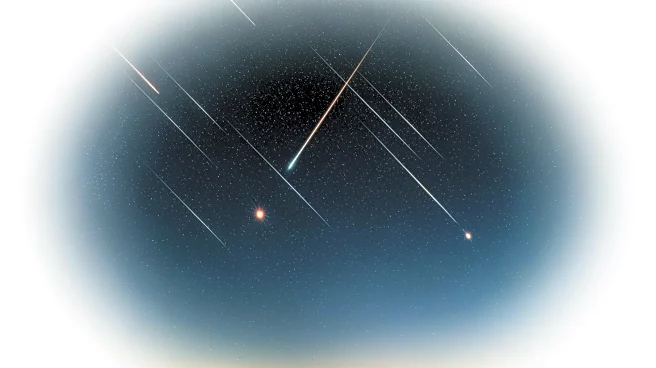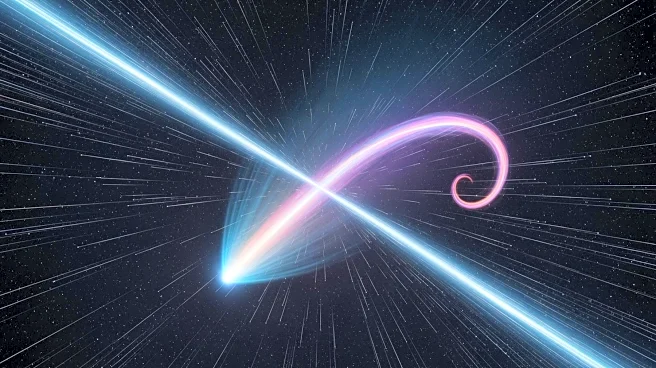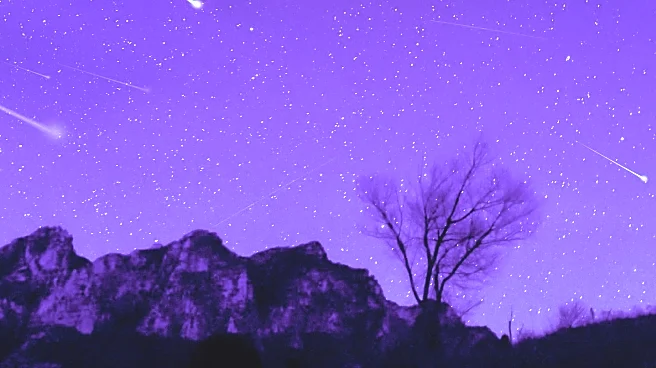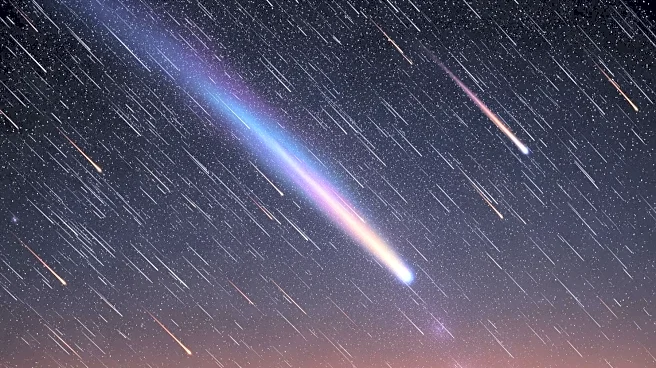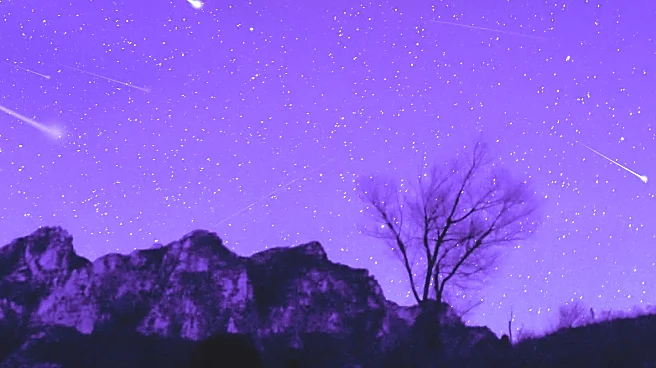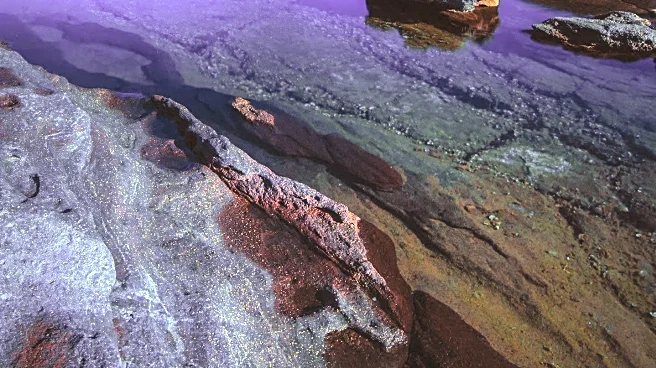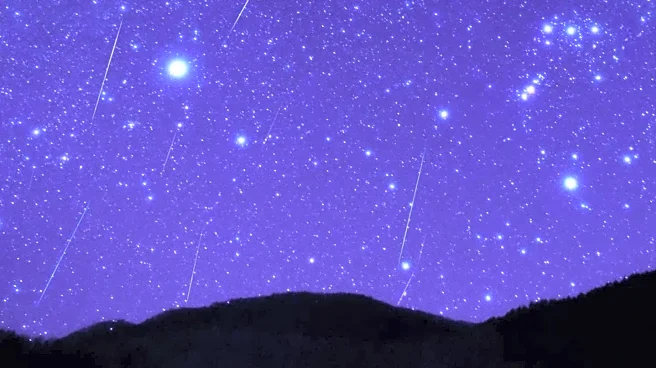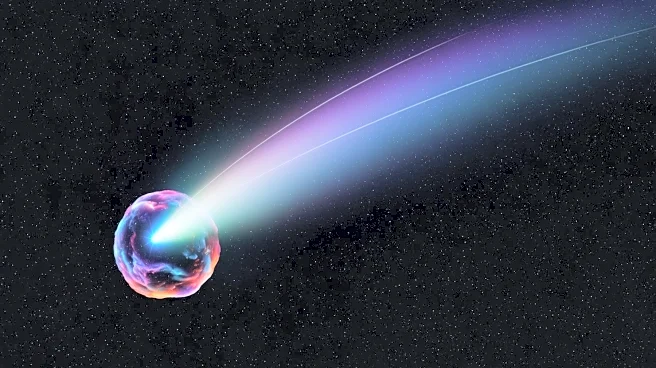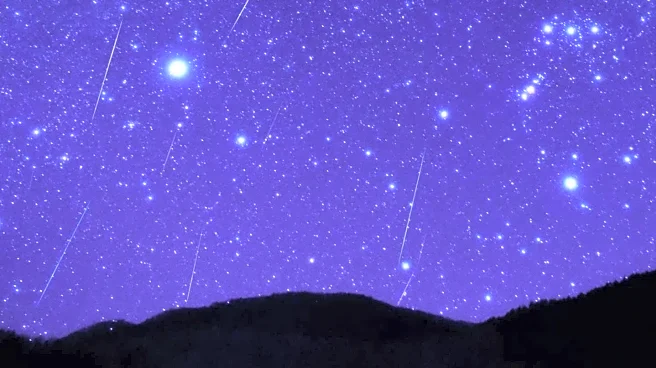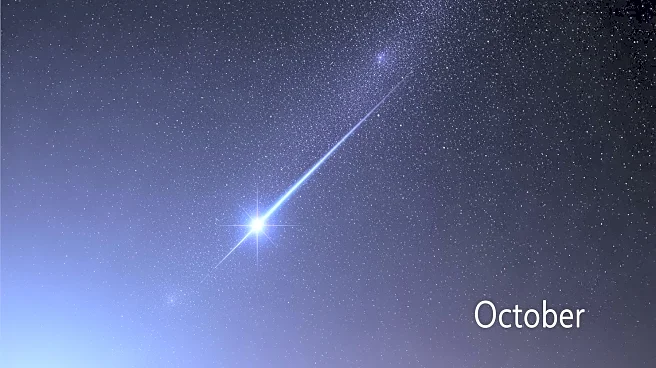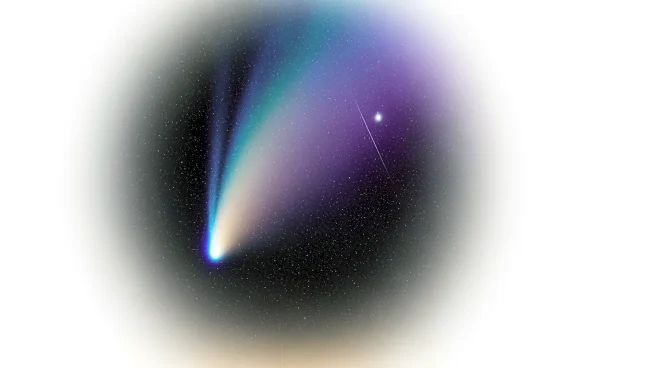What's Happening?
The Orionid meteor shower, originating from the debris of Halley's Comet, is set to light up the night skies globally. Named after the constellation Orion, the meteors can be observed from any part of the sky. The shower is active from October 2 to November
7, with its peak expected in the early hours of October 22. This year, the peak coincides with a new moon, providing optimal conditions for viewing. Observers can expect to see 10 to 20 meteors per hour at the peak, with the meteors leaving behind ionized gas trails that linger briefly. Seth McGowan, president of the Adirondack Sky Center and Observatory, notes that the Orion constellation will rise from the eastern horizon around 10:00 PM and be visible at 45° above the southern horizon by 4:00 AM.
Why It's Important?
Meteor showers like the Orionids offer a unique opportunity for public engagement with astronomy, fostering interest in science and the natural world. The event is accessible to the general public, requiring no special equipment, which can inspire educational activities and community gatherings. The Orionids, while not the strongest meteor shower, provide a spectacle that can draw attention to the broader field of astronomy and space exploration. This can have long-term benefits in encouraging STEM education and careers, as well as promoting awareness of celestial phenomena.
What's Next?
As the peak of the Orionid meteor shower approaches, enthusiasts and astronomers are preparing for optimal viewing conditions. Public observatories and astronomy clubs may organize events to facilitate communal viewing experiences. Weather conditions will play a crucial role in visibility, with clear skies offering the best chance to observe the meteors. The event may also prompt discussions on the significance of Halley's Comet and its historical impact on astronomy.
Beyond the Headlines
The Orionid meteor shower highlights the enduring legacy of Halley's Comet, first discovered by Edmund Halley, who calculated its orbit and predicted its return every 76 years. This celestial event underscores the importance of historical astronomical discoveries and their continued relevance in modern science. It also serves as a reminder of the interconnectedness of celestial bodies and their influence on Earth's environment.
